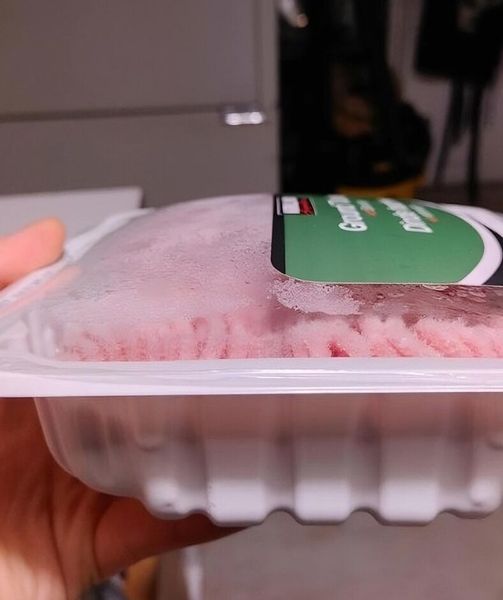
Have you ever come across a food package that looked swollen, as if it were puffed up with air? Bloated food packaging is a common occurrence, but many people aren’t sure what it signifies. Is it a simple air trap, or does it mean your food is unsafe to eat? In this article, we’ll break down what bloated food packaging really means and why you should pay attention.
What Is Bloated Food Packaging?
Bloated packaging refers to food containers, cans, or sealed packages that appear swollen or inflated. While it may seem like a small issue, it can be a signal of something far more serious.
Understanding Why Packaging Bloats
1. Bacterial Growth: The Main Culprit
One of the primary reasons for bloated packaging is the growth of bacteria inside the product. Harmful bacteria, such as Clostridium botulinum, can release gases that cause the packaging to swell. This gas build-up is an early warning sign that something inside is going wrong.
2. Spoilage Due to Poor Storage
Bloated packaging can also result from improper storage conditions, such as leaving perishable food at room temperature for too long. This allows microorganisms to multiply, leading to spoilage and puffed-up packaging.
3. Production Issues and Sealing Problems
Sometimes, bloated packaging occurs due to issues during the food processing stage. A poor seal or a faulty production process can let in bacteria, causing the product to spoil prematurely and swell.
Is Bloated Food Packaging Dangerous?
1. The Risks of Consuming Bloated-Packaged Foods
The short answer: yes, bloated packaging can be dangerous. Swollen packages can indicate bacterial contamination, which may lead to foodborne illnesses. For instance, botulism, caused by the bacteria Clostridium botulinum, is a potentially fatal illness that can result from eating contaminated food.
2. Common Symptoms of Food Poisoning
If you consume food from bloated packaging, you may experience symptoms of food poisoning such as nausea, vomiting, stomach cramps, diarrhea, and in severe cases, neurological issues like double vision and paralysis.
How to Identify Bloated Packaging
1. Visible Signs of Swelling
The easiest way to identify bloated packaging is through its appearance. Look for signs of puffiness or tight, inflated seals on plastic or foil wrappers.
2. Odd Smells or Leaks
If you notice an unusual odor or leaking liquid from the package, it’s best to discard the product immediately, even if the swelling isn’t extreme.
What to Do If You Encounter Bloated Food Packaging
1. Avoid Consuming It
The most important thing to do when encountering bloated packaging is not to consume the food inside. While it might be tempting to overlook the issue, especially if the food looks fine, it’s better to be safe than sorry.
2. Check Expiration Dates
Check the expiration or “best by” dates on the packaging. Expired products are more likely to show signs of spoilage, including bloating.
3. Return or Dispose of the Product
If you purchased the item recently and the package is bloated, consider returning it to the store for a refund or exchange. Otherwise, dispose of it safely to avoid any health risks.
Preventing Bloated Packaging in Your Groceries
1. Proper Storage Techniques
To prevent bloated packaging from happening in your home, always store perishable items like meat, dairy, and deli products in the refrigerator or freezer at the correct temperature.
2. Buy from Reputable Sources
Ensure that you’re buying food products from reliable sources that follow proper food safety and storage protocols. This can reduce your chances of encountering bloated packages.
Why You Should Never Ignore Swollen Packaging
Bloated packaging is not something to ignore or brush off as a minor inconvenience. Even though not all swollen packages contain harmful bacteria, the risks associated with them are significant enough that it’s better to discard or avoid them altogether.
Understanding Food Safety Labels
1. Best By vs. Expiration Dates
When you encounter bloated packaging, it’s helpful to understand food labels. “Best by” dates indicate peak freshness, while expiration dates signal the last safe date for consumption. If a product is bloated but hasn’t expired, it could still be unsafe due to contamination.
2. Food Safety Certification Seals
Look for certification seals such as FDA or USDA approval on your products. These organizations monitor food production and can help assure you of the quality and safety of your items.
Foods Most Likely to Experience Bloated Packaging
1. Canned Goods
Canned foods, especially low-acid items like beans, meats, and vegetables, are more prone to swelling due to bacteria such as Clostridium botulinum.
2. Packaged Meats
Vacuum-sealed or plastic-wrapped meats can also develop bloated packaging if they’re left at improper temperatures or contaminated during production.
When Is Bloated Packaging Not a Cause for Concern?
In rare cases, bloating could occur from non-harmful reasons, such as air trapped during the sealing process. However, distinguishing between harmless and dangerous bloating can be tricky, so it’s always better to err on the side of caution.
The Importance of Food Safety Awareness
Understanding bloated packaging is a crucial aspect of food safety. Being aware of the signs and potential risks can help prevent foodborne illnesses and keep you and your family safe. Always trust your instincts—if the packaging doesn’t look right, it’s best to avoid consuming the food inside.
Final Thoughts
Bloated food packaging is more than just an inconvenience—it’s a sign that something could be wrong with the food inside. Whether it’s due to bacterial growth, spoilage, or production errors, swollen packaging should be treated as a red flag. By staying vigilant and taking action when you notice bloated packaging, you can safeguard your health and prevent serious foodborne illnesses. Stay informed, trust your judgment, and prioritize food safety in your home.





